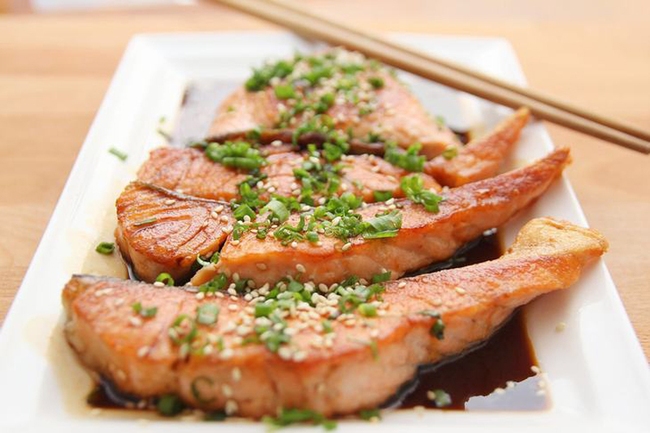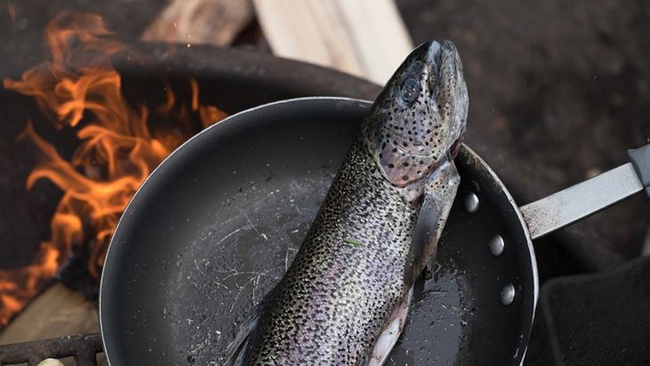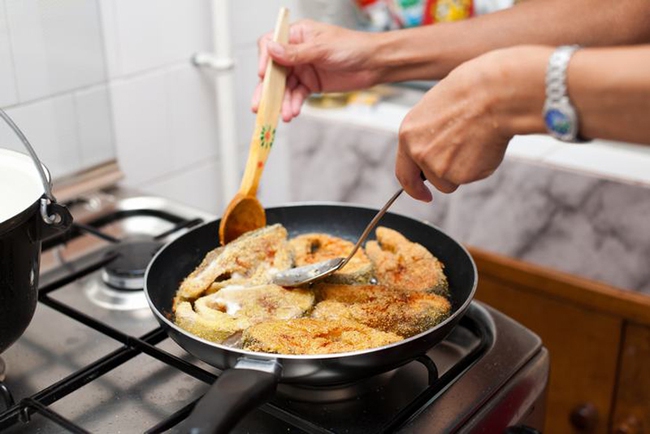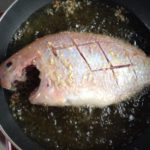The Importance of Properly Preparing Fish Dishes
Fish is a highly recommended food by nutritionists due to its numerous health benefits for the body. However, it is essential to prepare fish dishes properly to retain their nutritional value and prevent potential harm to your family’s health. Here, we discuss some common mistakes in preparing fish dishes that should be avoided.
Over-salting the sauce
To ensure the best flavor, it is recommended to use a moderate amount of salt in the sauce and avoid pouring it directly over the fish. When marinating the fish, it is advised to apply the salt directly onto the fish and only add a small portion to the sauce. It is important to note that over-marinating the fish should be avoided for optimal results.

It is important to dry the fish before cooking it to ensure a crispy and flavorful result. Drying the fish helps remove excess moisture, allowing for better browning and a more appetizing texture. To dry the fish, pat it dry with paper towels and let it sit uncovered in the refrigerator for about 30 minutes. This simple step will greatly enhance the taste and presentation of your fish dish.
To achieve a crispy texture when frying fish, it is important to ensure that the surface layer is not moist prior to cooking. Moisture will evaporate instead of allowing the fish to dry in the pan. Therefore, it is recommended to use a paper towel to thoroughly dry the fish before frying.
The cooking pan is not heated to the required temperature.
Properly starting the cooking process is crucial to achieving a delicious end result. Rushing this initial step can negatively impact the quality of your fried fish. When the frying pan isn’t adequately heated before adding the fish, it can lead to uneven cooking and the fish may absorb excess oil or become stuck to the pan.

Overcooking the fish can result in a dry and flavorless dish. It is important to cook the fish for the appropriate amount of time to ensure that it is cooked through but still moist and tender. Pay close attention to the recommended cooking times for different types of fish and adjust accordingly. Remember, it is better to slightly undercook the fish and allow it to continue cooking in the residual heat than to overcook it.
Overcooking the fish is a common mistake that should be avoided. Excess frying time can result in dry fish meat and the loss of its natural flavor. Furthermore, prolonged frying can also lead to the depletion of essential nutrients necessary for the fish’s well-being.
When preparing fish, it’s important to consider both the type of fish and the cooking method in order to determine the appropriate cooking time. For accurate results, using a meat thermometer is highly recommended. Simply insert the thermometer into the thickest part of the fish and ensure it reaches a temperature of 60 degrees Celsius (approximately 140 degrees Fahrenheit), which is the minimum temperature recommended by the US Department of Agriculture.
Overcooking the fish: Pay extra attention to how long you cook the fish. Flipping it too much can contribute to it becoming dry and less flavorful.
When cooking fish, it is important to minimize flipping in order to maintain its deliciousness. Excessive and premature flipping can lead to cracked, broken, or stuck crispy skin. To ensure the best cooking results, limit flipping to a minimum and avoid using tongs, as they can potentially damage the fish. Allow one side of the fish to fry until it achieves a golden and crispy texture before flipping to cook the other side. By allowing sufficient frying time, the fish will easily and successfully be flipped.

Properly preparing fish for cooking involves removing the skin beforehand. This step is essential for achieving a delicious and visually appealing dish. By removing the skin, you can prevent any unwanted strong or fishy flavors. Additionally, it helps the fish to cook more evenly and allows any marinade or seasoning to penetrate the flesh better. So be sure to take the time to remove the skin from your fish before cooking for the best results.
It is common for individuals to remove the skin of fish before cooking due to concerns of peeling or bursting. However, this misconception overlooks the fact that the proteins present in fish skin aid in its ability to flip and move within the cooking pan. Consequently, removing the skin unknowingly increases the fish’s vulnerability to tearing and reduces its crispiness.
In order to properly thaw fish, it is essential to avoid any improper methods. Thawing fish at room temperature or in hot water can be incredibly dangerous, as it allows for the growth of bacteria. The proper method for thawing fish is to do so in the refrigerator. Simply place the fish in a sealed container and let it thaw slowly in the fridge. This will ensure that the fish remains at a safe temperature as it thaws. Always prioritize safety and take the necessary steps to thaw fish properly for a delicious and safe meal.
When preparing fish, it is important to avoid common mistakes, such as using hot water to thaw the fish. This method inadvertently creates favorable conditions for bacteria to penetrate deep into the fish. Thawing fish at room temperature also provides ample opportunities for bacteria to grow. Instead, it is recommended to thaw the fish in the refrigerator for 4-5 hours. In the event that quick thawing is necessary, the following steps should be followed: place the fish in a sealed bag (preferably a zip bag), ensuring that the bag is completely covered in water but that the fish does not come into direct contact with the water. Subsequently, place the bag in a basin of cold water. This technique can effectively thaw a large piece of fish weighing approximately 1kg in just 20-30 minutes.
Revealing the Amazing West Coast Fish that Can Move on Land
The World Wildlife Organization recently revealed a list of 6 enigmatic creatures – one of them was the mudskipper! As its name suggests, this unique fish has an incredible gift to survive in mud, but it’s also able to jump out of the mud and on land. Keep reading to learn more about this amazing animal!






































